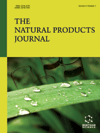
Full text loading...
Cynometra cauliflora Linn. (C. cauliflora), a member of the Fabaceae family within the Cynometra genus, is an underrated medicinal plant in Malaysia. It features frog-like fruits and is known locally as Namnam. The plant grows in tropical regions and is used in the traditional treatment of various medical conditions. Previous studies have revealed a broad range of its pharmacological benefits, including antioxidant, anti-inflammatory, anti-diabetic, anti-lipase, anti-diarrheal, cytotoxic, anti-microbial, and anti-cholinesterase properties. The active constituents identified in C. cauliflora are thought to contribute to its diverse range of biological activities. Research shows that different parts of C. cauliflora contain phenolic compounds, tannins, saponins, and flavonoids. The leaves and bark also have cardiac glycosides, while the fruit is rich in flavonoids, triterpenoids, saponins, and tannins. Furthermore, ethanol extracts of its leaves were found to contain vitamin C and its major constituent, vitexin. In this review, the biological activities of C. cauliflora are explored and reviewed through various literature sources, aiming to highlight the mechanisms and compounds that underlie its potential as a source for natural therapies.

Article metrics loading...

Full text loading...
References


Data & Media loading...

